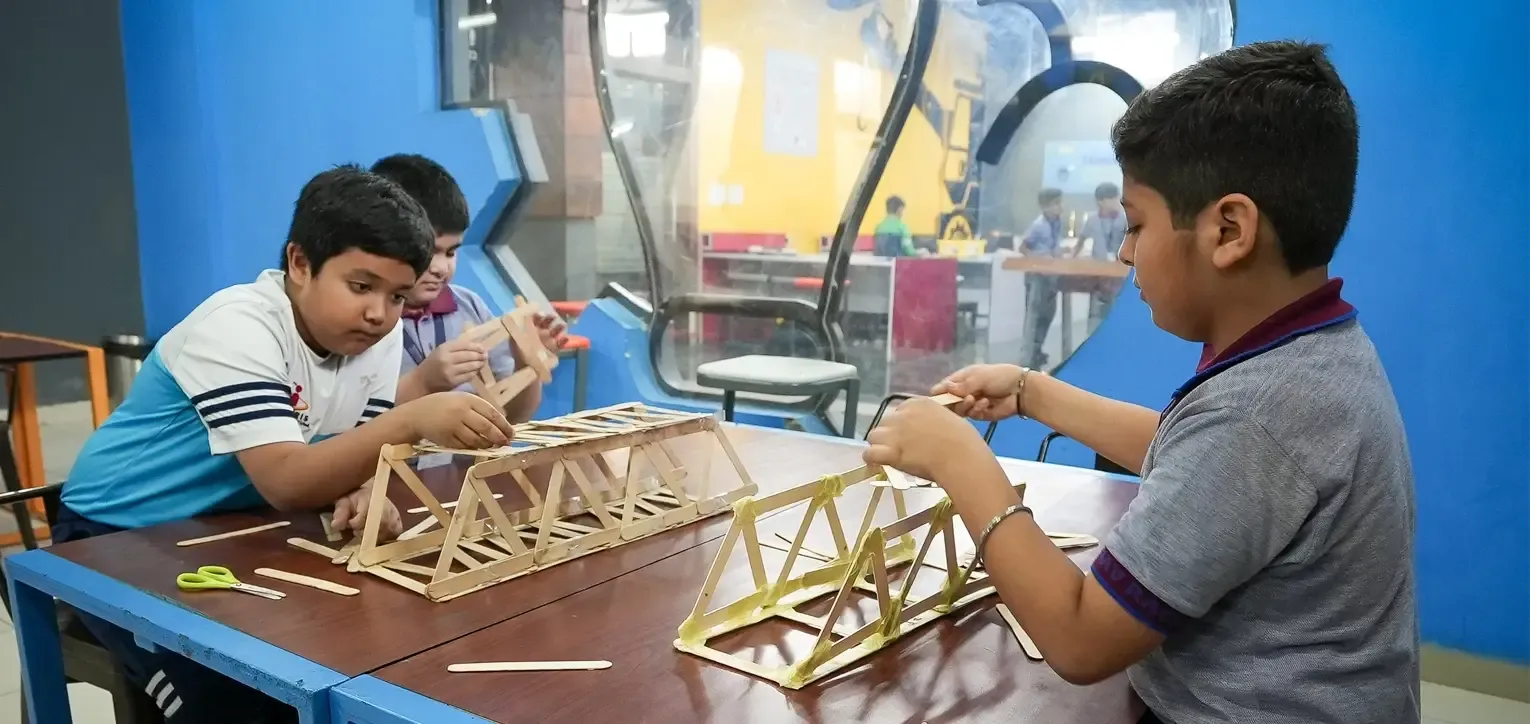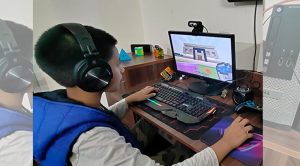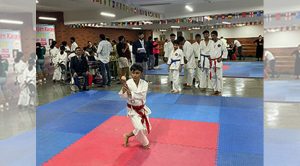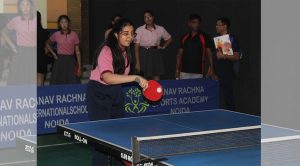Physical Vs Digital Games? Excess of everything or anything is not good for mental and physical health. Similarly, excess of physical and virtual games can disrupt our living. From time immemorial, games have been an integral part of our lives. With technology advancement, virtual or digital games have snugly adjusted themselves in human lives. Let us see what the author Ms. Ruchi Kanwar,Middle Wing Coordinator, Manav Rachna International School, Noida opines about the same. The post is her personal view about Physical Vs Digital Games~ Editor From the Author’s Desk ‘The old order changeth, yielding place to new’ Alfred Lord Tennyson Before embarking on the upcoming journey with all its twists and turns, let us try and trace the route from the beginning to smooth away the bumps that may come on the way. Let us start by defining a game. A game can be defined as a physical or mental activity involving skill, knowledge, or chance, in which one follows a set of rules and tries to win against an opponent. In other words, a game is a form of play with specific goals and structure. Games may be further diversified into video games and sports where video games are played in a closed environment, virtually/digitally and sports on the other hand need an external environment. That said which is the more gratifying of the two? To rephrase, are children drawn more towards virtual gaming or they would rather be on the playground playing their favourite sport? Is it possible to have a common point between the two pursuits? Are Video Games More Fun than Sports or the Vice Versa? The marked shift in the preferences in the sphere of games over the last decade has seen children gravitating heavily toward virtual gaming. The shift was further amplified by the striking of the pandemic which drove one and all into the confines of their homes. With the outdoor activities out of the league, children by and large moved towards video games for recreation. Even though we have come a long way from the days of the pandemic when schools have opened, sports are revived all over and the world is back to normal except that the children are yet to move away from the screen! Is it because video games hold more appeal for a child than real-life sports? Before answering the above question, I am compelled to pause at this juncture. Understandably, that the mention of the two in the same framework may come across as bizarre or even perplexing to our readers since both are separate entities that belong to different genres and cater to diverse psychological, cognitive, and physiological needs. Yet, there is a thread, though fragile in demeanor that binds the two together in all its puissance. As mentioned above, there has been a sharp shift toward online games since the strike of the epidemic. The advent and the popularity of VR games which let the player experience a real, first-person perspective of game action and have been around for some time has added fuel to the fire! One may weigh the impact from the fact that as per a recent study, the gaming sector is booming and could hit a whopping 1 billion by 2026. The observation wouldn’t have been possible without a penchant for online gaming. Does that mean that in a few years down the line, the lean towards virtual gaming is going to end up wiping off sports from a child’s life for good, or is there a parallel between sports and video games which despite their different trajectories make them meet at a certain point? As per a study, active video games can be a great asset in propelling children in the right direction. Accordingly, active video games work well at teaching basic skills whereas real sports are essential for a plethora of positive health and social consequence. It is revealed that while real-life sports are important for promoting children’s skills and approach towards sports, active video games impart additional opportunities to spark their interest and get them involved. In the following lines, we make an effort to locate the nexus of the two skills in the student’s school experience graph and the benefits of the one skill affecting the other: Improves Cognition and Perception One of the major advantages of playing video games is to develop the ability to recognize and recall the objects on the screen and establish a relation between the given objects or improve cognitive abilities. This leads to improved perception and triggers a child’s confidence leading him to participate in sporting activities and taste their potential benefits. Then again, the most essential cognitive skills for any athlete are the focus, visual attention, visual tracking, and fast decision-making. Fosters Self-Confidence Other than the channel mentioned above, children indulging in video gaming may also develop self-confidence by picking up all the important aspects and related scoring systems of the game at hand that may be overwhelming and difficult to pick on the ground. Consequently, by the time they decide to hit the ground; they’re already well-versed in the game. Develops Social Skills Online gaming facilitates the possibility of unfolding social skills within oneself as users tend to interact with other players fostering teamwork and relationship. This in turn prepares them in time to relate to the other players in real-life sports @ Manav Rachna. Likewise, games on the ground encourage teamwork as the skill necessitates collaboration with the rest to deliver results. Thus, in a way what starts as a virtual game to probably kill boredom and in some cases, even anxiety ends up bracing them for social skills indispensable on the ground. Increases Coordination Video Gamers tend to do well at those tasks that require speed, accuracy, and hand- to-eye-coordination. When extended to sports like tennis and badminton, players end up benefitting immensely from the combination. Whether it’s a fast-approaching ball you want to catch or strike with the bat, both video game players and those on the ground need that perfect coordination which they pick up over time with extended playing in one segment where they manage the show with the controller and practice in the other with the concerned sports equipment. Enhances Decision Making Skills Virtual games push one towards taking split-second decisions. Essentially, in due course, the player trains his mind to absorb information at a double-quick pace and reacts to it equally speedily. When applied to the arena of sports, the mantra proves to be of superlative importance when one is compelled to take quick decisions in a matter of seconds. The Manav Rachna Faculty believes in this to the hilt. Transfer of Interest Children while playing video games may not experience physical activity in a real sense unless it is a VR game. However, those interested in virtual football, basketball, and even skateboarding may find them gradually taking interest in these games in person on the ground. Promotes Responsiveness How do you define responsiveness and what is its role in the realm of online games and sports? It may be described in this context as an ability to respond in a flash of a second to a game’s changing landscape. In a like manner, a fast-moving athlete is expected to imbibe the same skill, be it countering a thrown ball from the other end or dodging it past the opponent team in the playground. Sharpens Problem Solving Skills Video games lead to logical thinking and problem-solving. Virtual games involve extensive planning, strategic thinking, and the use of logic to achieve a given target. A recent research revealed that gamers who spent long hours gaming possessed more grey matter and increased connectivity between specific sub-regions in the insular cortex. A large number of players show affinity towards games that need extensive planning and strategic thinking other than logic to attain goals within the game. It follows that sooner or later these players end up having toned problem -solving and logic skills. In the same vein, the world of sports calls for a similar aptitude and bent of mind. If we talk of golf, before you hit that ball, you need to estimate accurately the impact of wind and elevation on your shot other than planning a strategy for the second shot. For that matter, even basketball needs a sharp problem solving perspective to calculate the right shot that will land your ball in the basket. The Final Word There has been a significant change in perception toward gaming in the last few years. Whereas a few years back, we raised our eyebrows at the idea of video games being compared to sports, today we are much more tolerant, flexible, and most importantly have deciphered clearly the change of the wave and have adjusted accordingly. That said, are we ready to treat video games as a sport or blow it away as a farfetched notion? After a lot of speculation, we strongly feel that they must be considered so. It is clear as day that both sets of skills are replete with their specific attributes. Rooted in cognitive and problem-solving skills, involving athletic ability, requiring a deep pulsating discipline, heightened responsive behaviour, and sundry, video games, all in all, check all the boxes in the context. Having said that, though it’s true that experience sprouting from online gaming indeed motivates children towards trying a hand at real-life sports; however, the fact remains that sports with their complexities can be a problem for a section of children. That is to say, they may find the physical challenges tough when implemented in the real world and may just go back to the comfortable experience of playing video games. The only way to counter this situation is to well structure and suitably support sport experiences to provide children ample opportunities to master the skills at an elementary level before putting them together all into a full sport. Special care is needed for sedentary children where the schools may need a bridging program between video gaming and real-life sports to come up to their expectations and develop their skills with full support from the concerned sports faculty. Author: Ms. Ruchi Kanwar, Middle Wing Co-ordinator, MRIS Noida.Solving the ‘Gaming’ Mystery!









